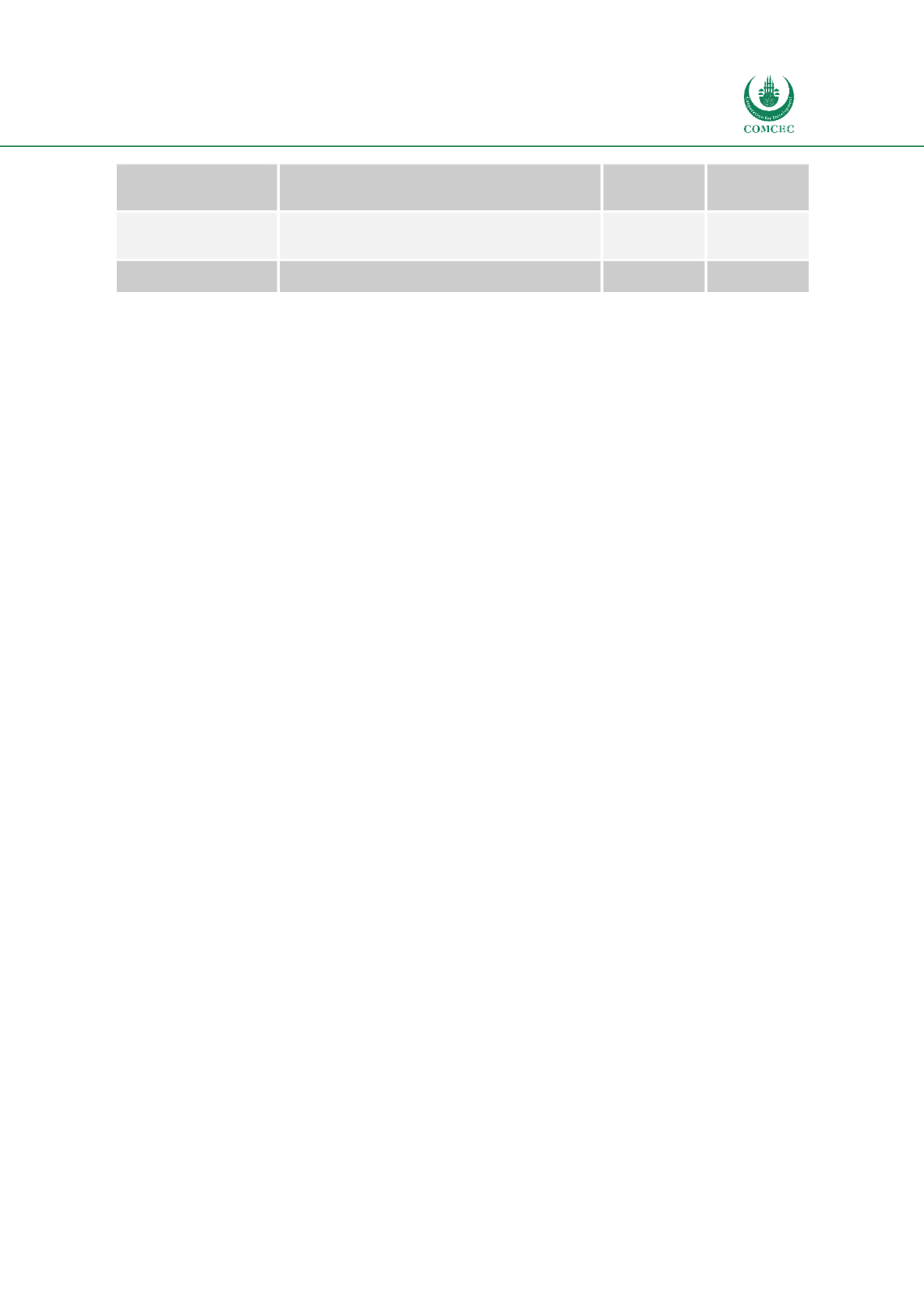

Facilitating Trade:
Improving Customs Risk Management Systems
In the OIC Member States
219
Legislation framework for
cooperation between
border agencies
GDP per Capita
0.357
Low
Cost to export:
Documentary compliance
(USD)
Time to export: Documentary compliance (hours)
0.757
Strong
Cost to export: Border
compliance (USD)
Cost to import: Border compliance (USD)
0.694
Strong
Source: Author’s compilation
The results from this analysis between the CRM variables and other analyzed variables are as
following:
LE IT System
. According to the correlation analysis based on Pearson's correlation
coefficient, customs administrations that have comprehensive LE IT system also use
integrated CRM system and more extensive coverage of the whole CRM cycle (strong
correlation between these variables). Additionally, to this, there is a strong negative
correlation (-0.604) between having LE IT system and having CRM embedded into the
CDPS which indicate and prove the previous results that having LE IT system require
integrated CRM system. There is a negative correlation between LE IT system with total
time to export (-0.271), so CAs using more comprehensive LE IT system have less time
to export. This analysis also shows that having LE IT system has a low negative
correlation (-0.368) with the participation of customs revenue in total tax revenue
collected in the country. This is expected because of revenue oriented administrations
focus more on the revenue side and less on security side (as a basis of LE IT system).
CAs with strong CRM policy and strategic governance has implemented LE IT system
(medium correlation of 0.410). LE IT system is also related to the higher ranking of
logistics performance index. Related to UN trade facilitation score, there is a medium
correlation (0.471) which means that CAs with integrated LE IT system have a better
UN Trade facilitation score, associated with CRM (0.300), pre-arrival processing (0.378)
and AEO (0.333).
CRM Cycle coverage
. Correlation analysis related to the coverage of the CRM cycle
indicate that CAs with CRM policy and strategic governance have more extensive
coverage of CRM cycle (0,558). Additionally, having in place integrated CRM system
allows better coverage of the whole CRM cycle (0.492). There is also low, but negative
correlation with: Time to export: Documentary compliance (hours), Total Costs to
Export (USD), Trading Across Border Ranking, Logistics performance index and Total
Time to Export (hours). Extensive coverage of CRM cycle brings fewer costs for traders
and higher logistics performance index and trading across the border ranking. The
analysis when it comes to GDP per capita (0.371) show that more coverage of CRM cycle
is directly related to higher GDP per capita.
Integrated CRM system
. According to this analysis, CAs that has an integrated CRM
system has a strong positive correlation with following stages of CRM cycle: Risk
Identification (0,551), Risk Analysis (0,551), and Evaluation of outcomes/feedback
(0,626). It is important to emphasize that the most critical feature of an integrated
system CRM system is enabling CRM more effective and efficient in the evaluation of
outcomes and feedback. There is a high negative correlation (-0,864) with CRM module
embedded into CDPS, that is expected and logical. Integrated CRM system is correlated
with CRM Policy and strategic governance (0.330), CAs with stronger CRM Policy and
strategic governance are using integrated CRM system. OIC MS CAs with integrated CRM
















